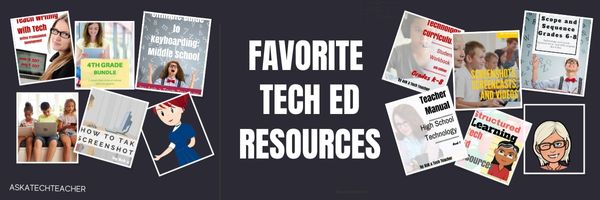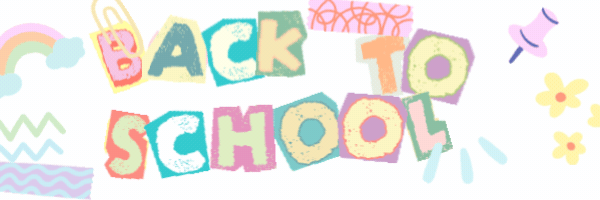What You Might Have Missed in August–What’s up in September
Here are the most-read posts for the past month:
- 40+ Word Study Websites
- 15 Webtools in 15 Weeks–the video
- Creating and Using Curriculum Maps Video
- Tech Ed Resources for your Class–K-8 Keyboard Curriculum
- Tech Ed Resources for your Class–Digital Citizenship
- Tech Ed Resources–K-12 Tech Curriculum
- Tech Ed Resources–Lesson Plans
- 35+ Online Audio Resources
- 20 Online Resources About Digital Storytelling
- Here’s How to Get Started with Ask a Tech Teacher
Here’s a preview of what’s coming up:
- mBot2: An Educational AI Robot for Coding
- 18 Digital Tool Musts–a video
- I’m traveling most of September–see you in October!
–image credit to Deposit Photo (more…)
Share this:
- Click to share on Facebook (Opens in new window) Facebook
- Click to share on X (Opens in new window) X
- Click to share on LinkedIn (Opens in new window) LinkedIn
- Click to share on Pinterest (Opens in new window) Pinterest
- Click to share on Telegram (Opens in new window) Telegram
- Click to email a link to a friend (Opens in new window) Email
- More
Tips for Teachers to Balance the Demands of School Events and Their Personal Lives
A friend of mine (who I’ll leave anonymous, at her request) struggled with the challenges of teaching and personal life. Teaching was her passion, but its demands soon overshadowed her personal needs. Last year, she was assigned a particularly large class whose requirements consumed too many evenings and weekends, leaving insufficient time for her kids and husband. She found herself skipping family events in favor of school, taking phone calls during family get-togethers, and staying at school late rather than be home for children homework and bedtime. The guilt began to weigh heavily and the stress affected her health, giving her sleepless nights, anxiety, and temper flare-ups she’d never experienced before. She knew there had to be a better way to give 100% to students while respecting her own needs.
As we approach a new school year, the Ask a Tech Teacher team has some basic ideas to get you started on balancing what arguably for many are the two most important parts of their life:
Tips for Teachers to Balance the Demands of School Events and Their Personal Lives
Achieving the perfect work-life balance for teachers through the term can be tricky since there are several school events to keep up with. School events can be demanding, and this is one of the reasons a teacher can use a report writing service to be able to complete reports on time or have time for other personal engagements. Finding ways to discharge your professional responsibilities without compromising your personal life is essential. So, let’s take a look at some ways teachers can balance the demands of school events and their personal lives. (more…)
Share this:
- Click to share on Facebook (Opens in new window) Facebook
- Click to share on X (Opens in new window) X
- Click to share on LinkedIn (Opens in new window) LinkedIn
- Click to share on Pinterest (Opens in new window) Pinterest
- Click to share on Telegram (Opens in new window) Telegram
- Click to email a link to a friend (Opens in new window) Email
- More
Happy Labor Day! Now Get to Work
Monday, September 2nd, is America’s Labor Day. It was originally organized to celebrate labor association strengths and contributions to the United States economy. Now, it has become a day of rest, the traditional end of the summer, and a last chance to make trips or hold outdoor events.
Here are some wonderful websites that will generate organic conversations about The Day:
- Child Labor
- Cybraryman’s Labor Day page--comprehensive as is his way
- History of Labor Day–Movie
- Labor Day activities, games, drawings for kids
- Labor Day infographic
- Labor Day for Kids: Read-aloud book
- Labor Day’s Violent Beginnings
- PBS Kids: Labor Day
- Ten Labor Day Facts (from Forbes)
- Today in History (Labor Day)–from Library of Congress
- Why Americans and Canadians Celebrate Labor Day–YT video
- Why do we celebrate Labor Day (from How Stuff Works)
Share this:
- Click to share on Facebook (Opens in new window) Facebook
- Click to share on X (Opens in new window) X
- Click to share on LinkedIn (Opens in new window) LinkedIn
- Click to share on Pinterest (Opens in new window) Pinterest
- Click to share on Telegram (Opens in new window) Telegram
- Click to email a link to a friend (Opens in new window) Email
- More
Tech Ed Resources–Mentoring and Coaching
I get a lot of questions from readers about what tech ed resources I use in my classroom so I’ll take a few days this summer to review them with you. Some are edited and/or written by members of the Ask a Tech Teacher crew. Others, by tech teachers who work with the same publisher I do. All of them, I’ve found well-suited to the task of scaling and differentiating tech skills for age groups, scaffolding learning year-to-year, taking into account the perspectives and norms of all stakeholders, with appropriate metrics to know learning is organic and granular.
Today: Mentoring and Coaching
Tech coaching/mentoring is available from experts who work with you via email or virtual meetings to prepare lesson plans, teach to standards, integrate tech into core classroom time. If you’re new to tech education and wonder how to teach kindergartners to use the mouse, first graders to keyboard, third graders to sagely search the internet, pick the brains of our seasoned team of technology teachers.
Note: If your District has purchased a license, you get some coaching for free. Check on that before signing up.
- How do you start kindergartners who don’t know what ‘enter’, ‘spacebar’, ‘click’ or any of those other techie words mean?
- What do you do with third graders who join your class and haven’t had formal technology classes before?
- You’ve been thrown into the technology teacher position and you’ve never done it before. How do you start? What do you introduce when?
- You’ve been teaching for twenty years, but now your Principal wants technology integrated into your classroom. Where do you start?
- How do you differentiate instruction between student geeks and students who wonder what the right mouse button is for?
- How do you create a Technology Use Plan for your school?
- How do you create a Curriculum Map?
- As an edtech professional, what’s your career path?
For more information on coaching, mentoring, PD, online classes, and consulting, click here.
For a start-up discount on Coaching-Mentoring, use this code: FK5SZM2A Sept. 1-10th.
Share this:
- Click to share on Facebook (Opens in new window) Facebook
- Click to share on X (Opens in new window) X
- Click to share on LinkedIn (Opens in new window) LinkedIn
- Click to share on Pinterest (Opens in new window) Pinterest
- Click to share on Telegram (Opens in new window) Telegram
- Click to email a link to a friend (Opens in new window) Email
- More
22 Back To School Websites
Here are a few of the popular resources teachers are using to
- BTS resources from Microsoft
- BTS resources from Teachers Pay Teachers
- Back to School Survival Kits
- BTS Toolkit from Education.com
- Make a class photo in Pixton EDU
 –image credit Deposit Photos (https://depositphotos.com/)[/caption]
–image credit Deposit Photos (https://depositphotos.com/)[/caption]
We write about back to school often on Ask a Tech Teacher. Here are some of the past articles I think you’ll like:
- 3 Apps to Help Brainstorm Next Year’s Lessons
- 5 FREE Web Tools for a New School Year
- 5 Tech Ed Tools to Use this Fall
- 5 Top Ways to Integrate Technology into the New School Year
- 5 Ways Teachers Can Stay on Top of Technology
- 5 Ways to Involve Parents in Your Class
- 6 Tech Best Practices for New Teachers
- 8 Tech Tools to Get to Know Your Students for Back to School
- 11 Back-to-school Activities for the First Month of School
- Back to School–Tech Makes it Easy to Stay On Top of Everything
- Dear Otto: I need year-long assessments
- Great Activities for the First Week of School
- Great Back to School Classroom Activities
- How to Build Your PLN
- New School Year? New Tech? I Got You Covered
- Plan a Memorable Back to School Night
- Ready To Go Back To School? 7 Fun Lesson Ideas To Start The New Year
Share this:
- Click to share on Facebook (Opens in new window) Facebook
- Click to share on X (Opens in new window) X
- Click to share on LinkedIn (Opens in new window) LinkedIn
- Click to share on Pinterest (Opens in new window) Pinterest
- Click to share on Telegram (Opens in new window) Telegram
- Click to email a link to a friend (Opens in new window) Email
- More
Subscriber Special: Back to School Survival Kits
Every month, subscribers to our newsletter get a free/discounted resource to help their tech teaching.
September 1-8, 2024, we’re offering a 20% discount on any Survival Kit. Pick one from this link:
https://www.structuredlearning.net/product-category/all-in-one-resource-collections/
Use this code:
3XAR9WZU
Click through for additional hidden discounts!
Questions? Email us at askatechteacher@gmail.com (more…)
Share this:
- Click to share on Facebook (Opens in new window) Facebook
- Click to share on X (Opens in new window) X
- Click to share on LinkedIn (Opens in new window) LinkedIn
- Click to share on Pinterest (Opens in new window) Pinterest
- Click to share on Telegram (Opens in new window) Telegram
- Click to email a link to a friend (Opens in new window) Email
- More
How College Admission Consulting Services Improve Your Chances Of Acceptance
How College Admission Consulting Services Improve Your Chances Of Acceptance
Navigating the complex college admissions process can be challenging for students and their families, especially for first-timers. With increasing competition, particularly for spots at prestigious institutions, the stakes are higher than ever.
For this reason, college admissions consulting services have emerged as essential resources, providing expert guidance to help students maximize their chances of acceptance. Continue reading to learn more about how these services can significantly improve your college application journey.
Understanding College Consulting
College consulting refers to professional guidance provided by experts, often known as college admissions consultants, to help students process their applications effectively and improve their chances of being accepted. These consultants offer college search assistance, test preparation, essay editing, application submission, and interview preparations. College consulting services are particularly valuable in helping students strategically position themselves to increase their chances of acceptance at their desired colleges.
Typically offered by specialized firms or individual consultants, admissions consultants aim to provide students with a comprehensive plan that aligns with their academic goals, extracurricular activities, interests, and personal strengths. By leveraging insider knowledge and experience, they help students stand out and convince the selection board that they deserve a spot.
The Benefits of College Consulting Services
College consulting services provide a range of benefits that can greatly enhance your college applications. Here are some of them: (more…)
Share this:
- Click to share on Facebook (Opens in new window) Facebook
- Click to share on X (Opens in new window) X
- Click to share on LinkedIn (Opens in new window) LinkedIn
- Click to share on Pinterest (Opens in new window) Pinterest
- Click to share on Telegram (Opens in new window) Telegram
- Click to email a link to a friend (Opens in new window) Email
- More
Tips for Teachers to Balance Work and Life During the Busy Parent-Teacher Conference Season
Tips for Teachers to Balance Work and Life During the Busy Parent-Teacher Conference Season
The parent-teacher conference season often demands your full attention since you will have to create and update records as well as give specific feedback to every parent about their child. The workload during this season is often bulky, and one may not have adequate time to focus on personal commitments. It’s one of the reasons why some teachers advancing their studies choose to use dissertation writing services. These services help them free up time for personal engagements while ensuring they graduate.
During the busy parent-teacher conference season in the school calendar, teachers usually have to multitask. Thus, there is a need to create an exclusive schedule that covers your personal and work commitments specifically for this period. Here are some ways to balance your work and life during this busy period. (more…)
Share this:
- Click to share on Facebook (Opens in new window) Facebook
- Click to share on X (Opens in new window) X
- Click to share on LinkedIn (Opens in new window) LinkedIn
- Click to share on Pinterest (Opens in new window) Pinterest
- Click to share on Telegram (Opens in new window) Telegram
- Click to email a link to a friend (Opens in new window) Email
- More
Be Featured on Ask a Tech Teacher
I get thousands of visitors a day–over six million since I started. The most common reason why you-all drop by is for resources. I have lots of them–lesson plans, tips and tricks–but one area I have not enough depth is the experiences of fellow teachers:
- your personal teaching experiences
- your informed take on tech ed topics
- Education pedagogy
If you’re interested in guest posting on this blog or start your own column, leave a comment below and I’ll be in touch. It’s a challenging time but one we-all can get through if we talk to each other.
Share this:
- Click to share on Facebook (Opens in new window) Facebook
- Click to share on X (Opens in new window) X
- Click to share on LinkedIn (Opens in new window) LinkedIn
- Click to share on Pinterest (Opens in new window) Pinterest
- Click to share on Telegram (Opens in new window) Telegram
- Click to email a link to a friend (Opens in new window) Email
- More
Teacher-Authors: What’s Happening on my Writer’s Blog
A lot of teacher-authors also read my WordDreams blog (for writers). In this column, I share the most popular post from the past month.
AI in Writing
I use AI judiciously and never without adult supervision. It is efficient if well directed, provides good summaries of articles on a factual level, and is fast if I’m not looking for clever, creative, complex, or any sort of conscience. Accepting those limitations, I find it good for summaries of articles on my education blog and lists for just about anything. AI loves lists.
What AI can’t do is at the absolute core of fiction writing:
- provide personal experience
- act with any sort of moral compass
- make judgments
- bare its soul
- bleed on a page
- put the lion in a character’s heart
- sacrifice, say, the easy wrong for the hard right
- choose the right attitude in a given set of circumstances
- find a North star
- put charisma in a story or character–or setting
As a result, I use it where it suits, avoid it where it fails. How about you?
Here’s the sign-up link if the image above doesn’t work:
https://forms.aweber.com/form/07/1910174607.htm
“The content presented in this blog are the result of creative imagination and not intended for use, reproduction, or incorporation into any artificial intelligence training or machine learning systems without prior written consent from the author.”
Jacqui Murray has been teaching K-18 technology for 30 years. She is the editor/author of over a hundred tech ed resources including a K-12 technology curriculum, K-8 keyboard curriculum, K-8 Digital Citizenship curriculum. She is an adjunct professor in tech ed, Master Teacher, webmaster for four blogs, freelance journalist on tech ed topics, contributor to NEA Today, and author of the tech thrillers, To Hunt a Sub and Twenty-four Days. You can find her resources at Structured Learning.
Share this:
- Click to share on Facebook (Opens in new window) Facebook
- Click to share on X (Opens in new window) X
- Click to share on LinkedIn (Opens in new window) LinkedIn
- Click to share on Pinterest (Opens in new window) Pinterest
- Click to share on Telegram (Opens in new window) Telegram
- Click to email a link to a friend (Opens in new window) Email
- More

























































